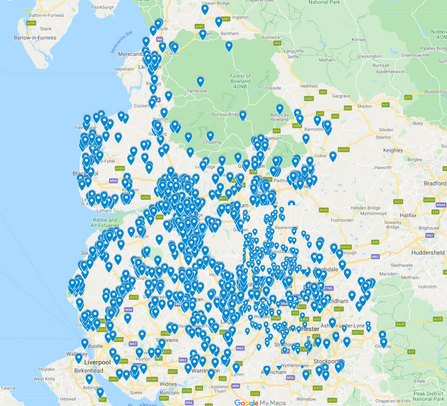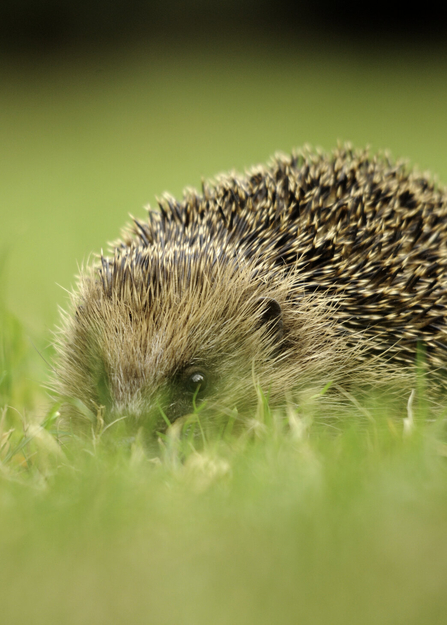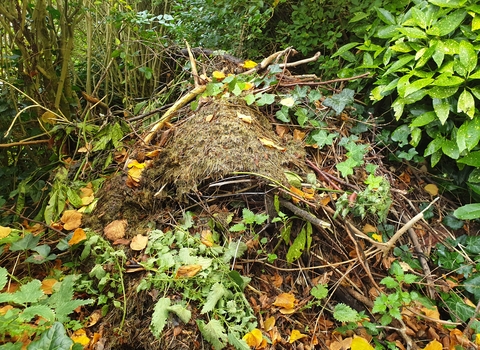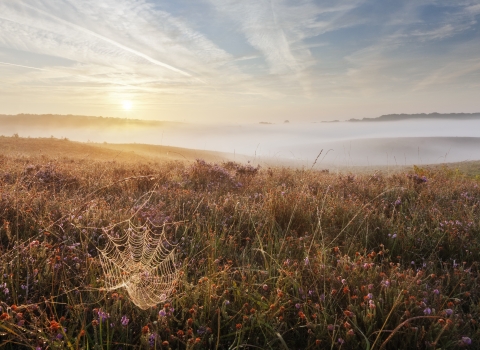Our 2019 hedgehog survey revealed that though hedgehogs weren’t doing too badly in our region – with many more being reported alive than dead – the situation still wasn’t completely rosy for our spiky friends. The vast majority of sightings came from urban areas, which reflected national conservation data about the countryside becoming less and less hedgehog-friendly. Pesticides and habitat loss had created a perfect storm that hedgehogs were struggling to weather, but what’s the situation now?
The results of our 2020 hedgehog survey

Hedgehog sightings across Lancashire, Manchester and North Merseyside from September - November 2020.
How are hedgehogs doing in Lancashire, Manchester and North Merseyside?
In 2020, hedgehogs were classified as vulnerable to extinction, making it more important than ever to research how they’re faring locally. We’re thrilled that 1,085 of you took the time to fill out our hedgehog survey (double the number of 2019 respondents!), as more data means we can start building a more accurate picture of our local hedgehog populations. So, what did your sightings reveal?
Thankfully, like in 2019, the majority of sightings were of live hedgehogs: 1,010 were recorded as being alive. Sadly, 18 hedgehogs were reported as being dead, while 52 hedgehogs were logged as roadkill specifically.
44 of the people who filled in our survey reported seeing more than one hedgehog at once, with one sighting involving eight regularly visiting hogs! 40 people stated that the hedgehogs were visiting their garden, with one pair even being caught mating. There were seven sightings of mothers with hoglets, which is really encouraging. These particular sightings are great evidence of the importance of gardens to hedgehogs in the modern age, when their traditional ‘wild’ habitat is shrinking.
How to make your garden more hedgehog-friendly
Not all the news was positive though. Seven people said they’d never seen a hedgehog, one person hadn’t seen one in the last 19 years, and another respondent said it was ‘a long time ago’ since they’d seen a hedgehog. Five people hadn’t seen a hedgehog in the last 10 years, with two survey respondents logging their sightings in 1971 and 1930. The locations of these records are telling: three were logged right on the border with agricultural land, one was encircled by agricultural land, one in a very built-up area with little-to-no green space, and two in a completely agricultural area. Sadly, it looks as if the threats previously facing hedgehogs are still affecting their numbers and pushing them out of the countryside where they once thrived.
So, where were the most hedgehogs sighted? Like in our 2019 survey, the bulk of records came from cities and other urban environments, with the same two areas coming out on top:
- Preston: 162 sightings
- Manchester and Salford: 106 sightings
- Chorley: 93 sightings
- Bolton: 85 sightings
- Wigan: 79 sightings
- Liverpool and Merseyside: 64 sightings
Unfortunately, the higher traffic levels in these urban settings mean these were also the places where most roadkill hedgehogs were reported.

Hedgehog by Amy Lewis
Where are hedgehogs doing well in Lancashire, Manchester and North Merseyside?
Again, mirroring our 2019 hedgehog survey results, the areas that saw the most live hedgehog sightings followed a distinct trend: the sightings came from quite densely populated, suburban areas where the houses have gardens and are near, or next to green pockets bordered by trees or hedges. These areas provide the valuable cover that hedgehogs now lack in large, wide-open agricultural fields, and act as important corridors where hogs can forage safely at night, away from traffic and potential predators.
This data reinforces the importance of keeping nature in mind when building new houses, farming, gardening and more. To help hedgehogs bounce back from the brink, we need to return to them:
- Pathways through gardens – a simple CD-sized hole in your fence will do.
- Potential nesting and hibernation sites in the form of hedgehog houses, wood and leaf piles, traditionally-managed hedges, compost heaps and long grass.
- Pesticide-free foraging grounds where there is plenty to eat, and where food isn’t laced with chemicals.
- Cover when out foraging in the form of field margins, permanent grasslands, scrubby areas and hedgerows.
What happens next?
We’ve passed the results of our hedgehog survey to the local wildlife records centre for each region:
- Lancashire Environment Record Network (LERN)
- Greater Manchester Local Record Centre (GMLRC)
- Merseyside BioBank
Each records centre will add these results to their existing hedgehog data; building a more accurate picture of how these mammals are faring.





